Homepage / News Details
Primary, secondary and tertiary treatment of sewage
- Categroy:News
- Author:
- Origin:
- Release Time:2021-06-02 14:22
- Views:
【Summary】The main treatment
Primary, secondary and tertiary treatment of sewage
【Summary】The main treatment
- Categroy:News
- Author:
- Origin:
- Release Time:2021-06-02 14:22
- Views:
The main treatment
Primary treatment: physical
When wastewater reaches the treatment plant, it contains many solids that cannot be removed by the wastewater treatment process. This includes rags, wood, food pellets, plastic, and even toys and money. To remove these solids, wastewater goes into a building called Headworks and is filtered through a large sieve to remove the solids. The solids are then put into trash cans and sent to landfills. This is the only by-product of wastewater treatment that is not recycled!
Main clarifier: physics
From Headworks, wastewater flows into two large circular pools called primary clarifiers. Here, the waste water slows down and stays in the tank for about two hours. This causes the suspended material in the wastewater to either float to the surface or sink to the bottom of the sea.
Large blades rotate slowly on the surface and bottom of the primary clarifier to remove these substances from the wastewater. The water recycling facility has two primary clarifiers. Clarifier is covered to reduce odour!
Secondary treatment
Aerated basin: biology
Wastewater flows from the primary clarifier into large rectangular tanks called aeration tanks, where a biological process known as the "activated sludge process" is performed. Wastewater flows slowly through a series of chambers as large quantities of air rise out of the water. With so much air added, the water looks as if it is boiling. In these basins, wastewater is mixed with "activated sludge," the hundreds of millions of active single-celled microorganisms (mostly bacteria and protozoa) known as "bugs."
Air is needed to help living things thrive and reproduce. What do they eat? Wastewater waste! When the worms eat, the waste water is cleaned up. When the wastewater is in an aeration tank, mixed with millions of bacteria, the air bubbles in it, and it looks like scalding hot chocolate. When all the food (waste) is gone, about 8 hours later, the waste water leaves the aeration tank.
Some bugs were sent back to the starting point of the aeration basin to keep the process going. Some microbes continue with the wastewater to the next step in the treatment process, the secondary clarifier.
Secondary clarifier: physics
After entering the two secondary clarifying tanks, the wastewater still contains a large number of microorganisms in the aeration tank, which is brown and turbidized. The secondary clarifier is the same as the primary clarifier; Materials in the wastewater settle, float, and rotate arms to remove them from the water.
After being treated in a secondary clarifying tank, the wastewater is now ready to be released into the Napa River or further treated to produce circulating water.
Tertiary treatment
Filtration: physics/chemistry
The waste water that leaves the secondary clarifier looks as clean as drinking water! Depending on the conditions, the water can either go directly into the disinfection process to produce recycled water or into the filtration building.
The filters remove very minute solids (" suspended solids ") before the waste water goes into disinfection. The polymer is added at this step to bring the suspended matter together, making them easier to filter out.
Releate News

Time of issue : 2024-04-15 16:52:27

Time of issue : 2024-04-09 10:13:04

Time of issue : 2024-04-01 17:10:12
CONTACT US
PRODUCTS
CALCIUM HYPOCHLORITE
TCCA
SDIC
BCDMH
FEEDBACK
© 1999-2018 北京网站建设有限公司 Copyright © 2012-2022 All Rights Reserved Powered by www.300.cn 冀ICP备12012949号 津公网安备 12010302002173号 Seo tag

